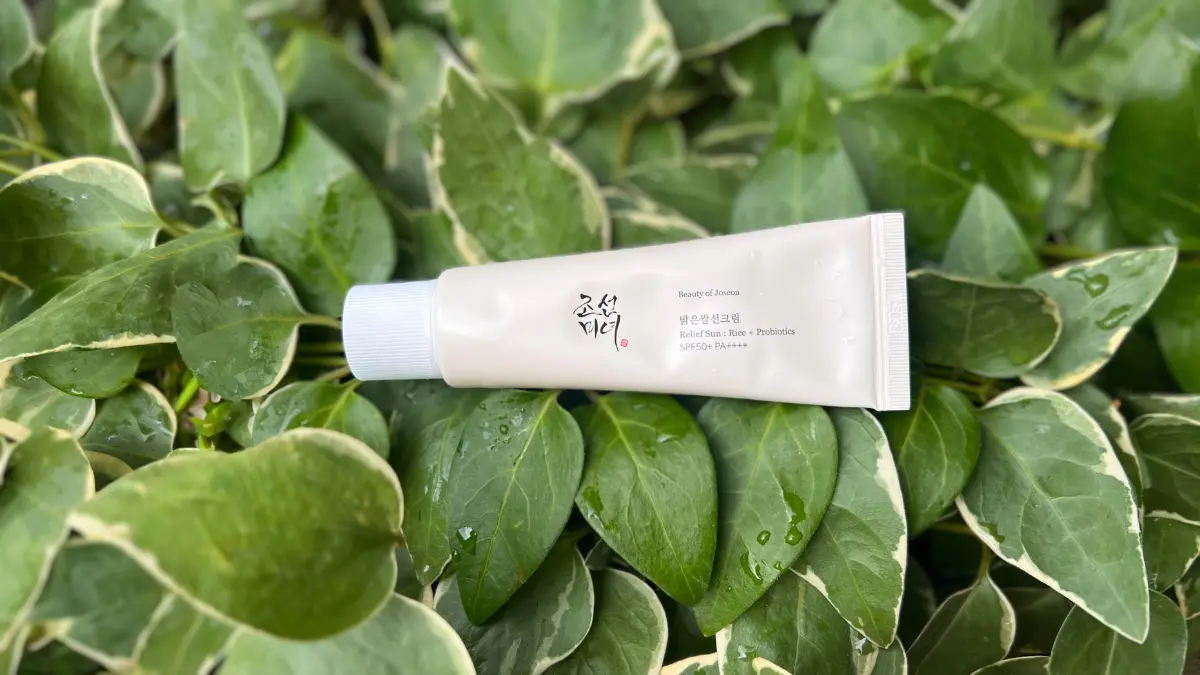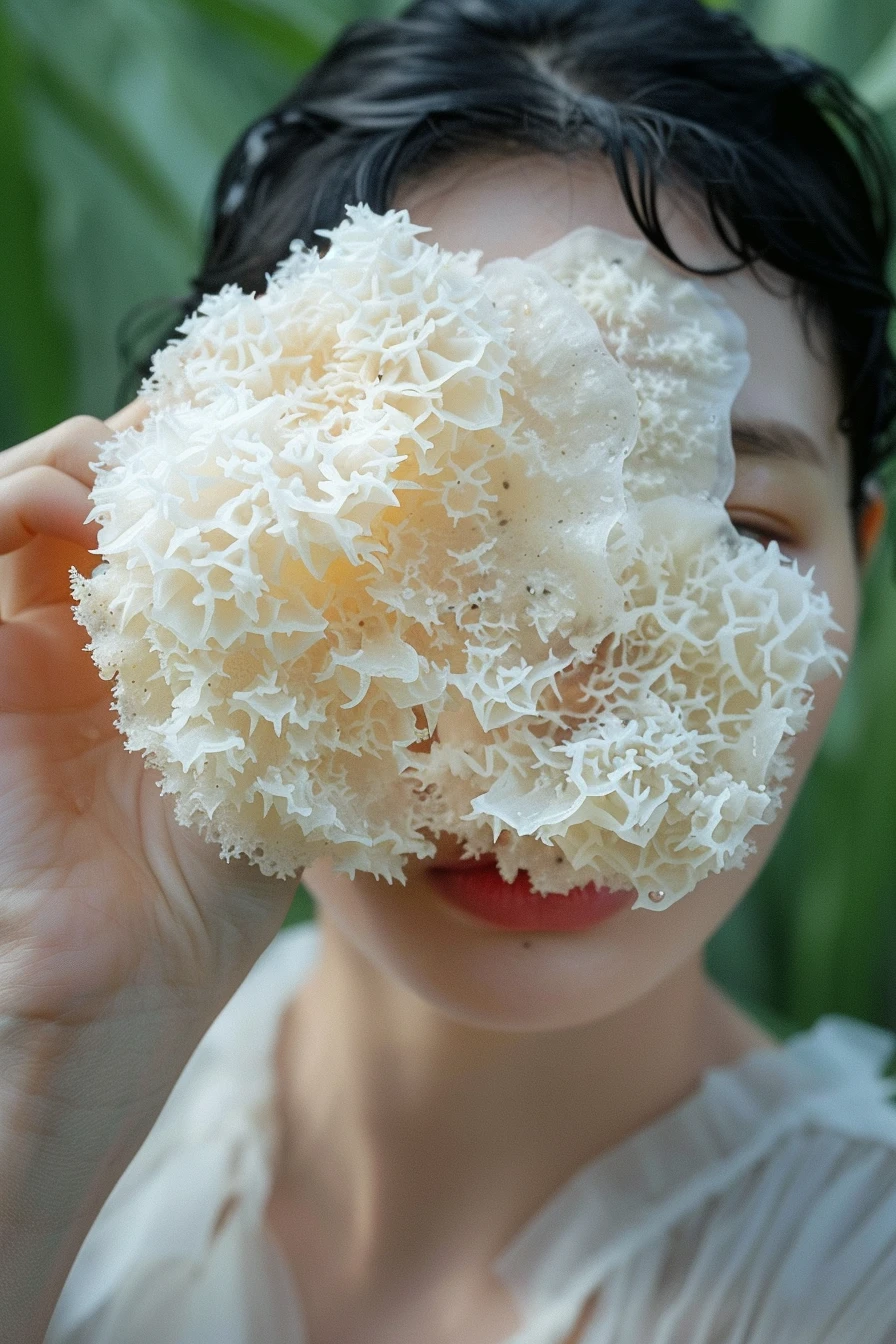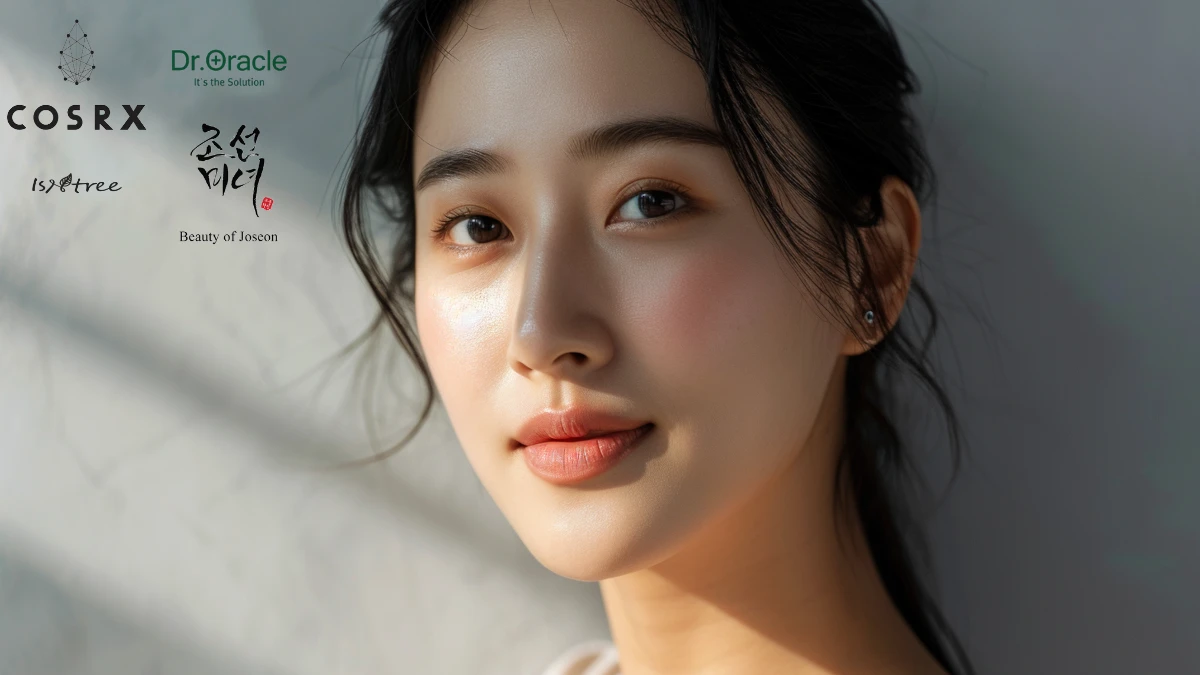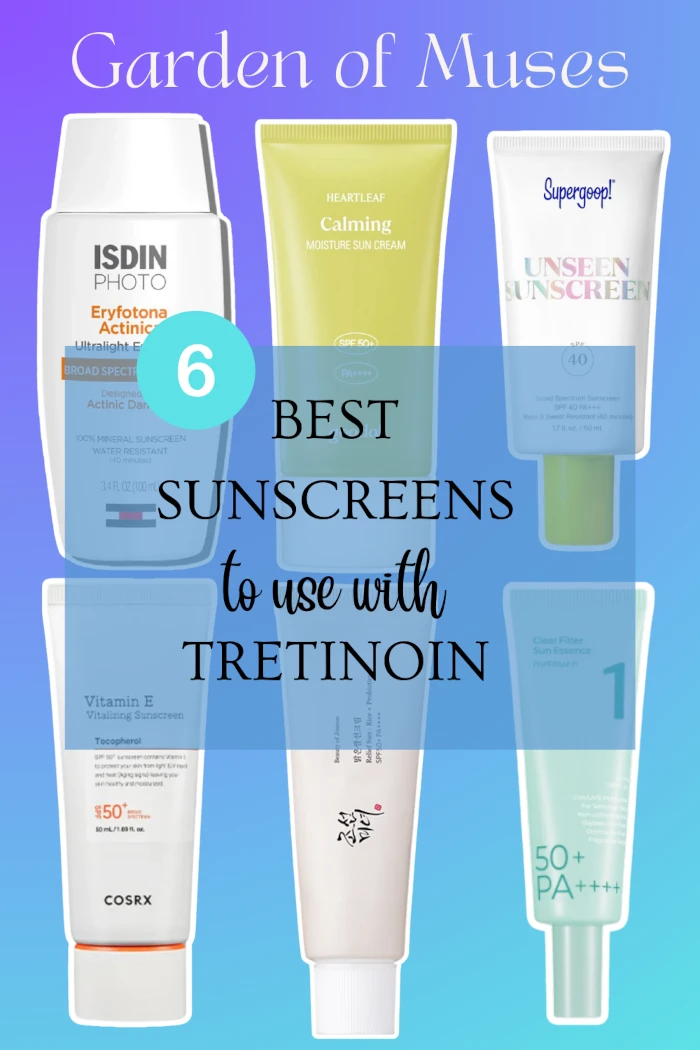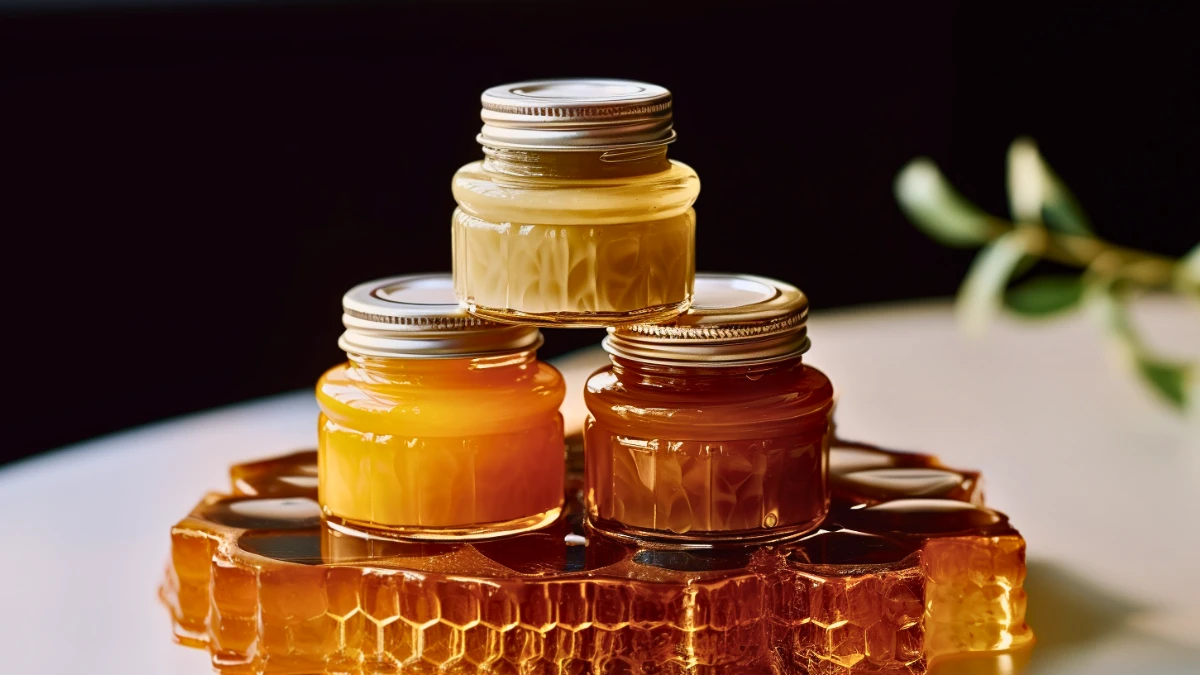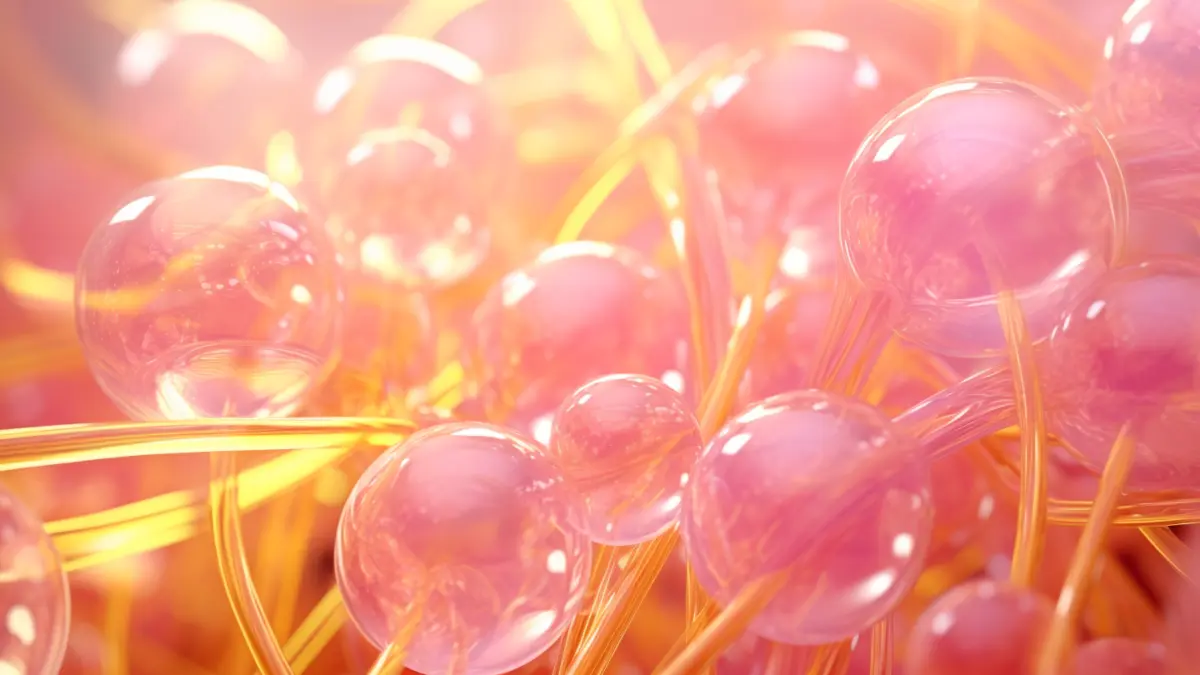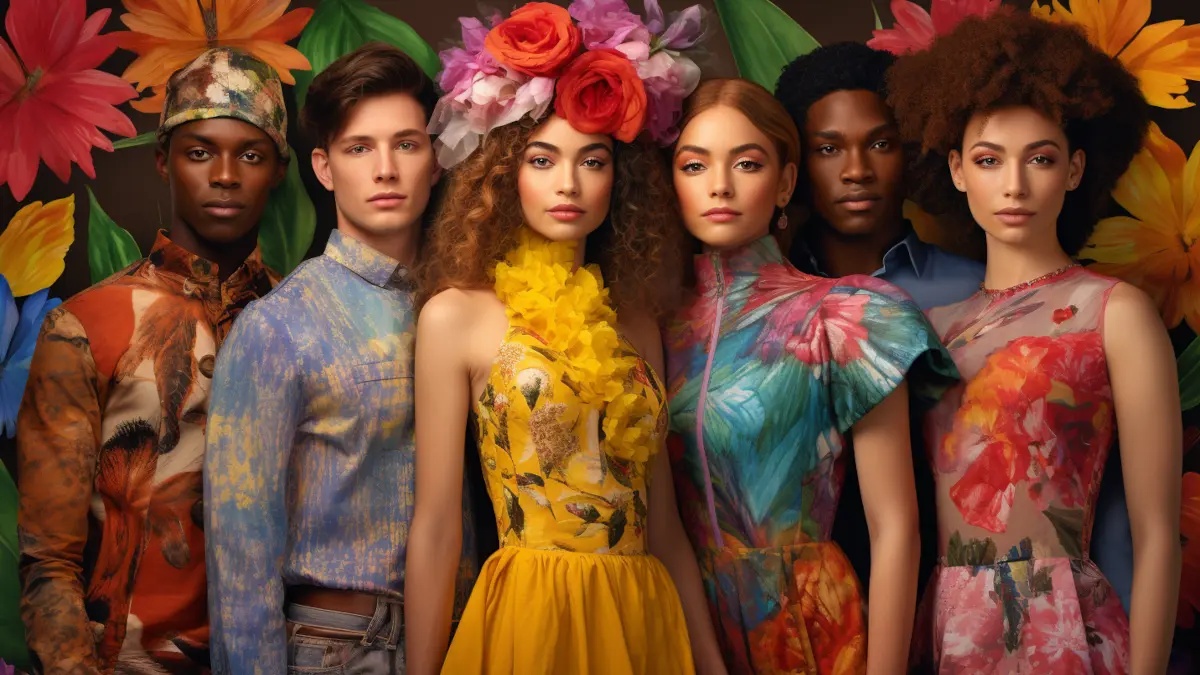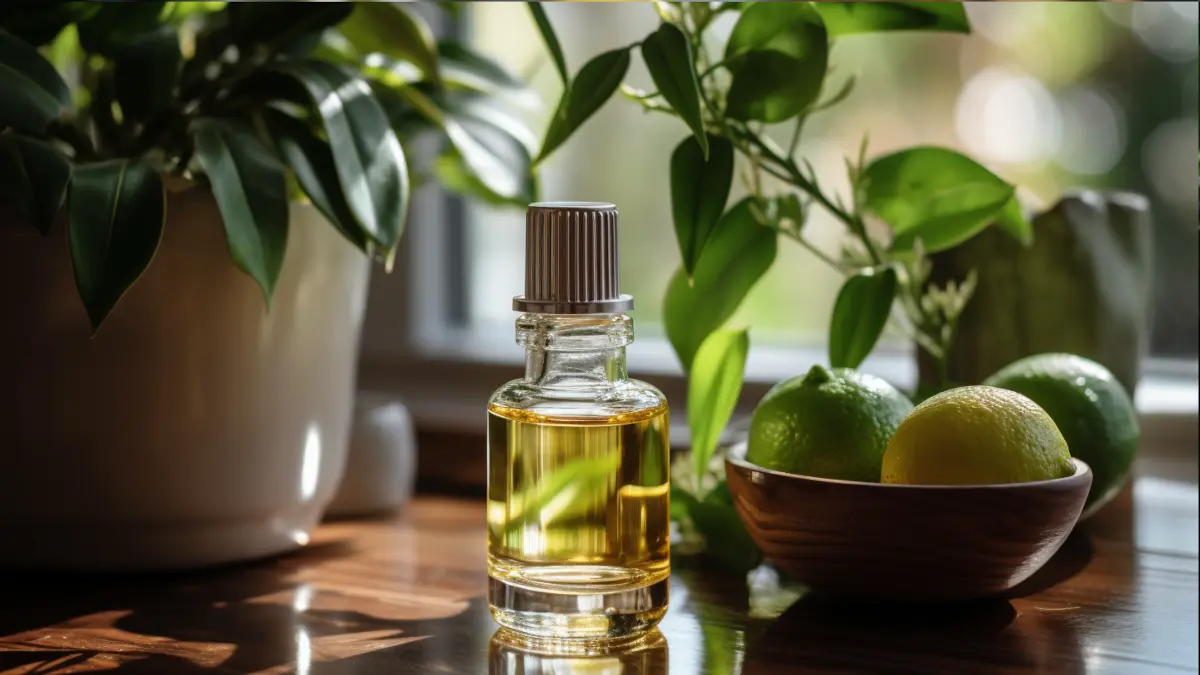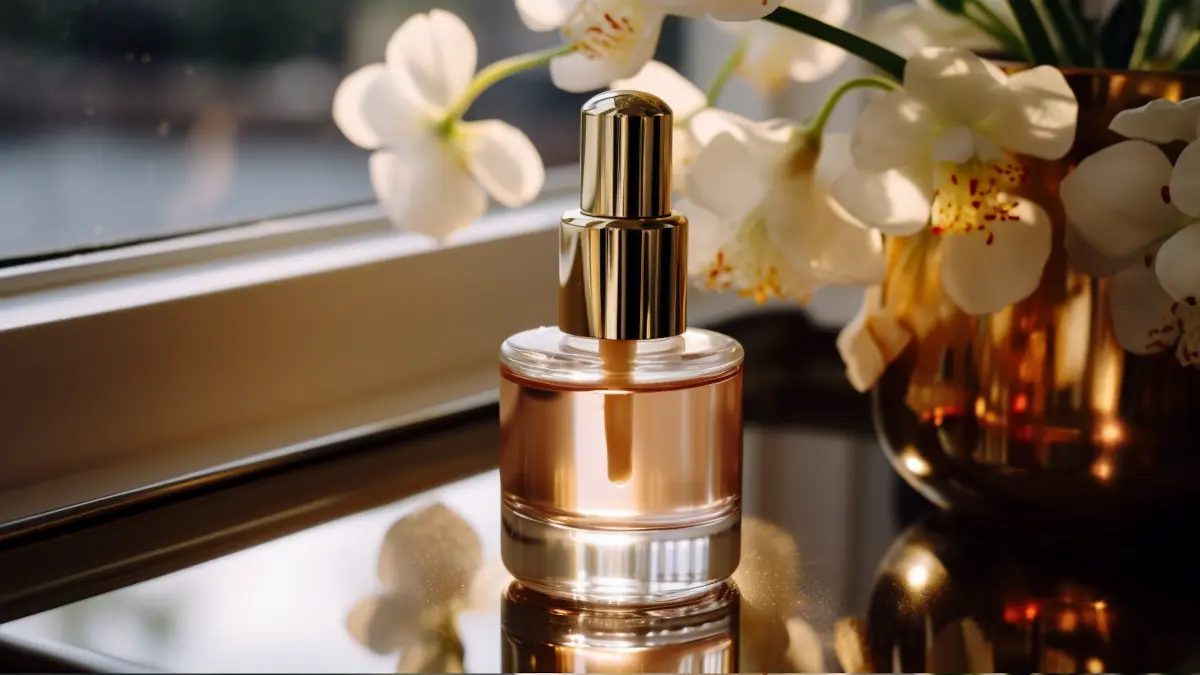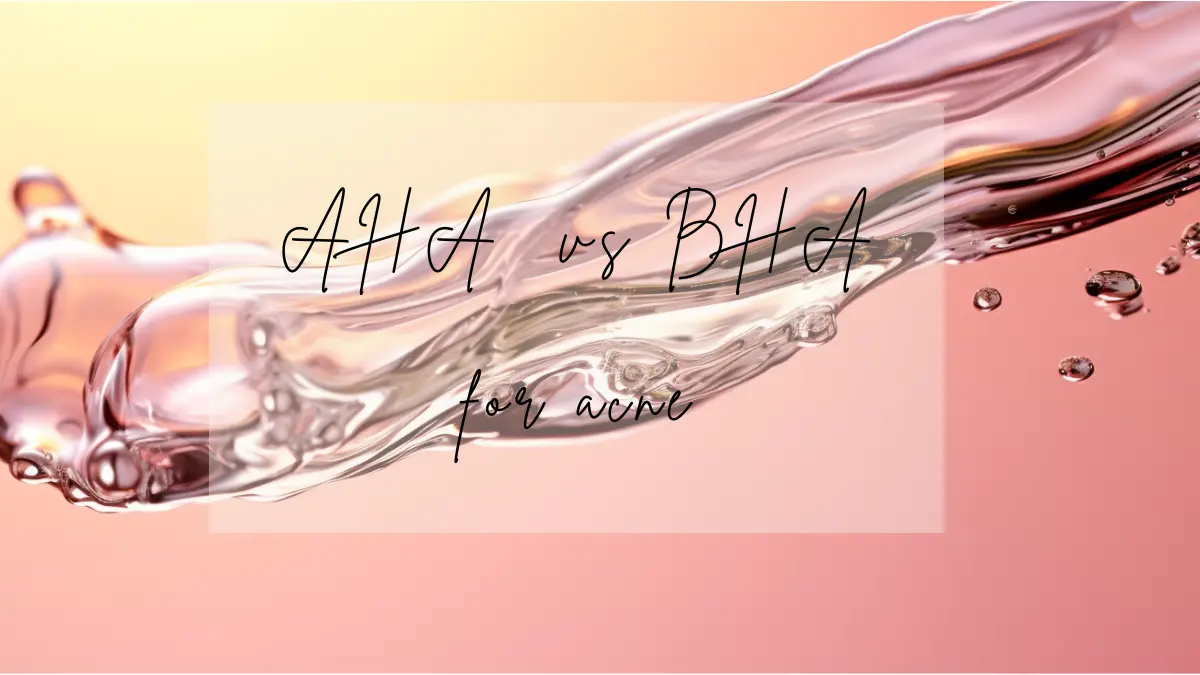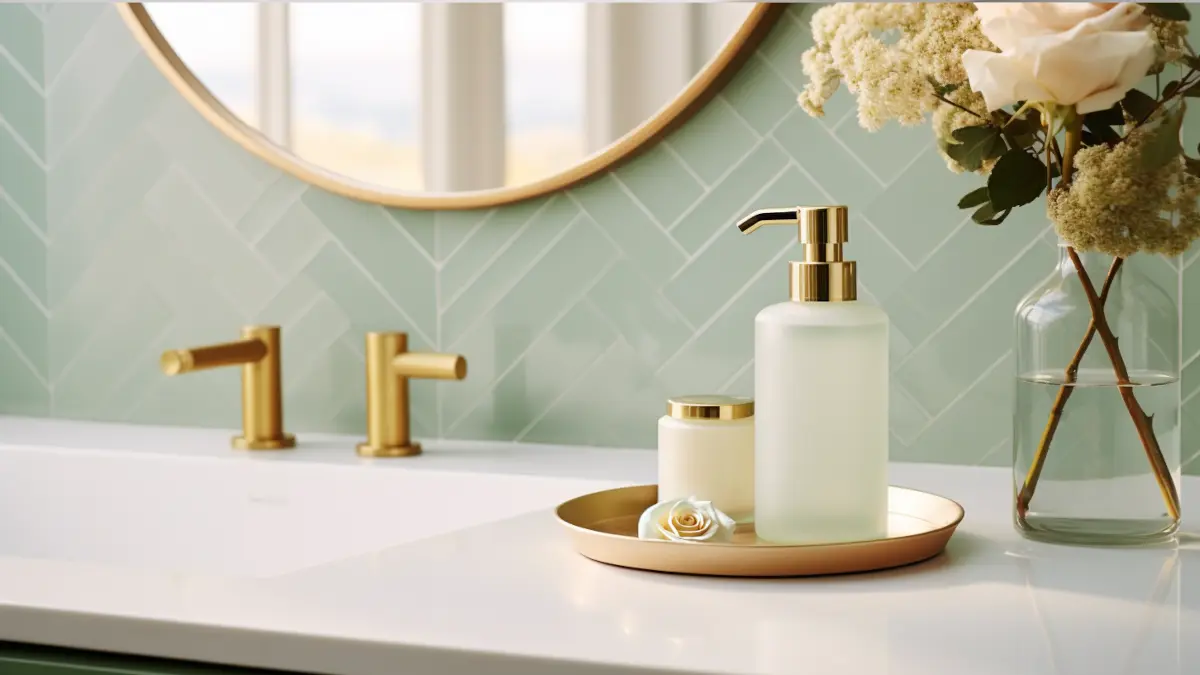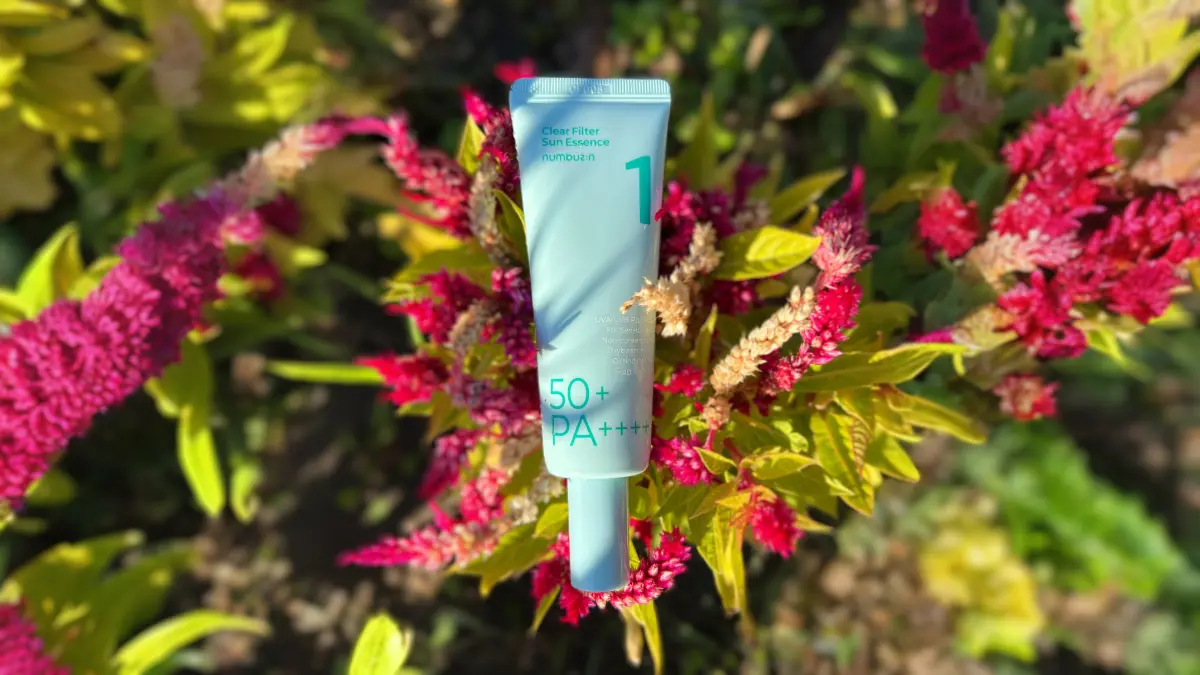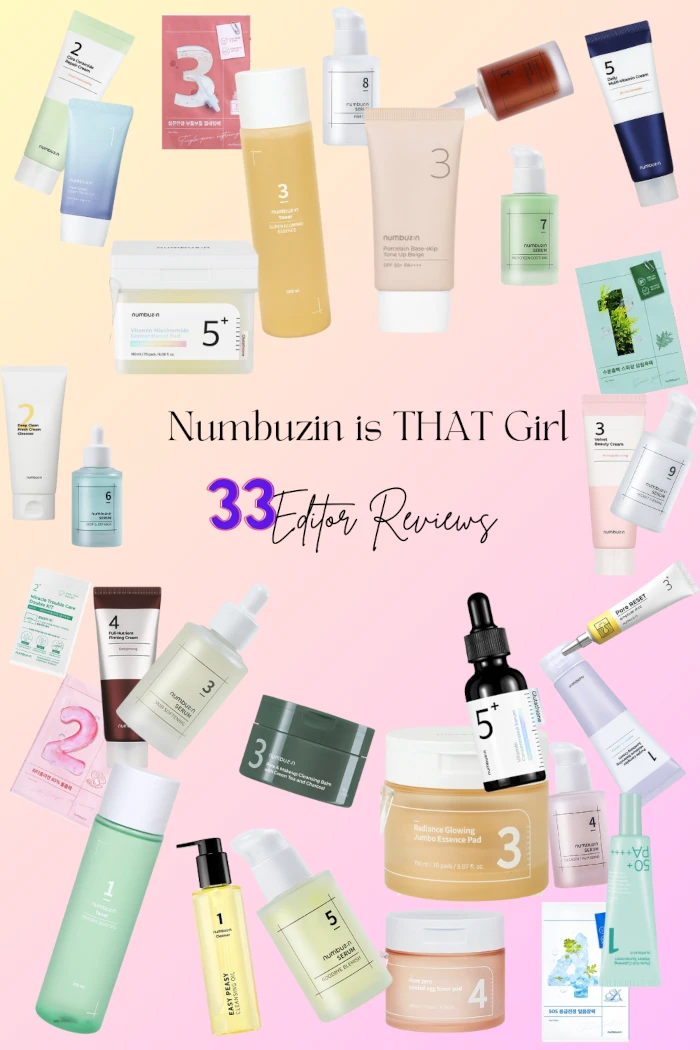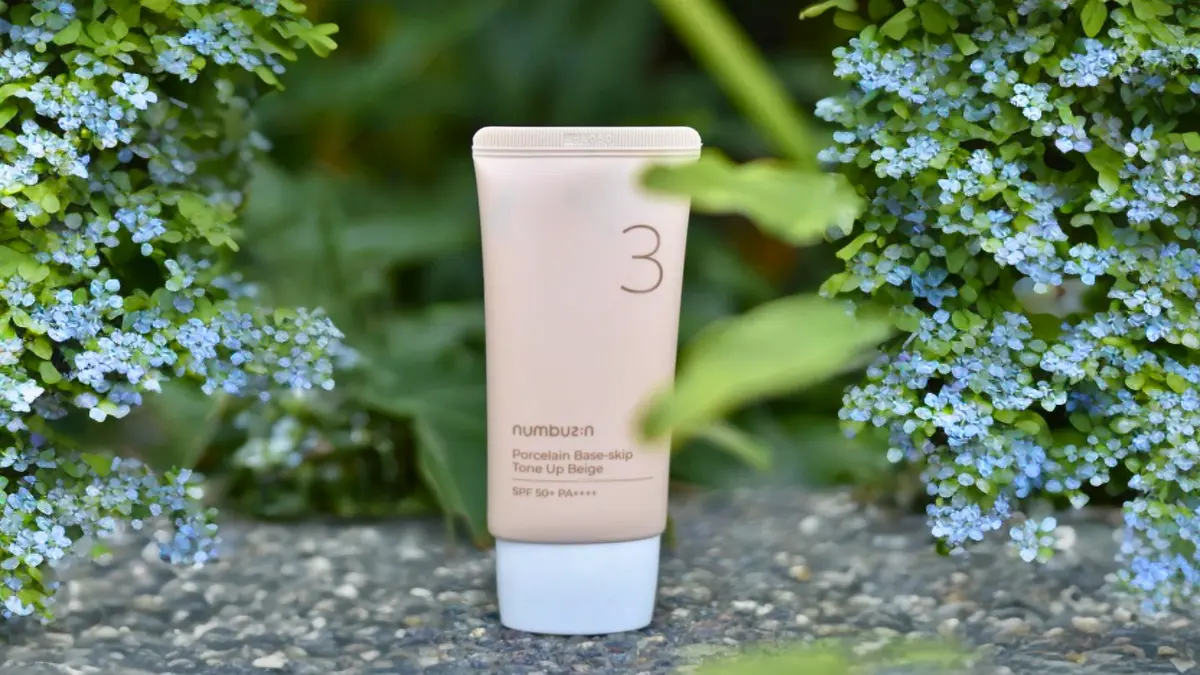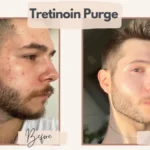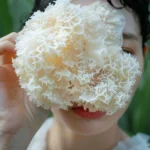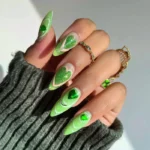One of the hardest things I find to buy is sunscreen. I have a love/hate relationship with sunscreen. I know and love the protection it gives my skin, but I also hate how hard it is to find a decent one. In the past, many of the sunscreens I have come across smelled terrible (that sunscreen smell), left a white cast, or were just too thick and heavy on my face.
Many of the sunscreens I have enjoyed using in the past are more like moisturizers with a minimal amount of SPF, which, in the end, is not enough protection for me or anyone.
I have only recently decided to invest more in products that will offer me more protection from the sun. The result of this so-called “investment” is that I now own several sunscreens from many different brands.
I have learned that texture and how sunscreen feels on my skin plays a huge role in whether or not I like a product. Unicorns could have put tears in the ingredients for all I care about, but I know I won’t use it if it doesn’t feel right on the skin. If the SPF doesn’t feel lightweight in texture, it is a complete miss, which plays a massive role in my spending habits.
But this sunscreen is a hit. I’ve only seen rave reviews for it. So I had to have it.
The Beauty of Joseon Relief Sun: Rice + Probiotics Review
Where can you buy the Beauty of Joseon Relief Sun: Rice + Probiotics?
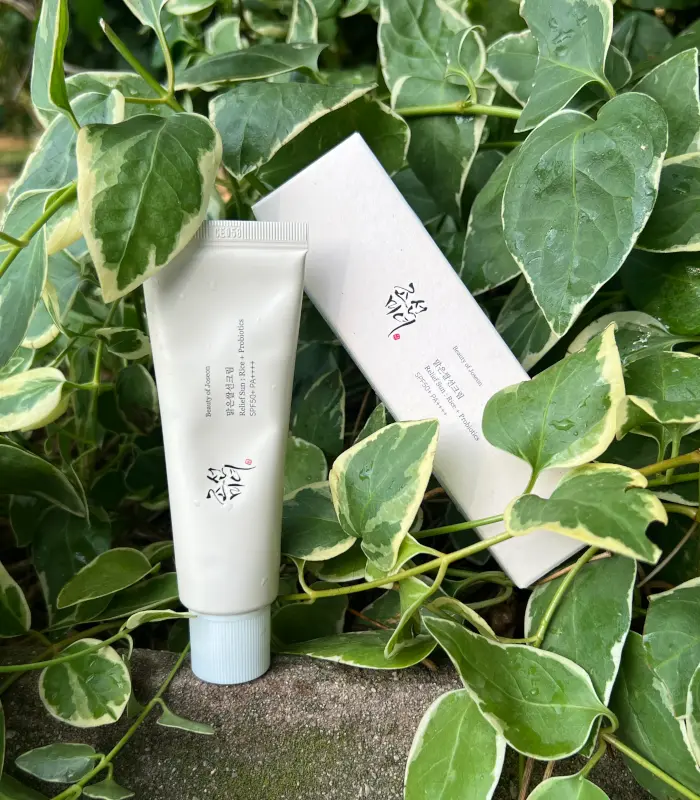
The Beauty of Joseon Relief Sun: Rice + Probiotics (SPF50+ PA++++) retails at $12-$18 for a 1.69 fl.oz./ 50ml standard sunscreen tube. That means it is about $9 per ounce.
Unfortunately, this BOJ sunscreen cannot be purchased from the Beauty of Joseon’s official store on Amazon, so beware of fakes. I have included many photos in this review, especially for this purpose, so you can distinguish between real and fake tubes.
You can shop for it on the official Beauty of Joseon retailers: StyleVana, YesStyle*, and StyleKorean. Here’s our editor’s guide to safely shopping for Korean skincare.
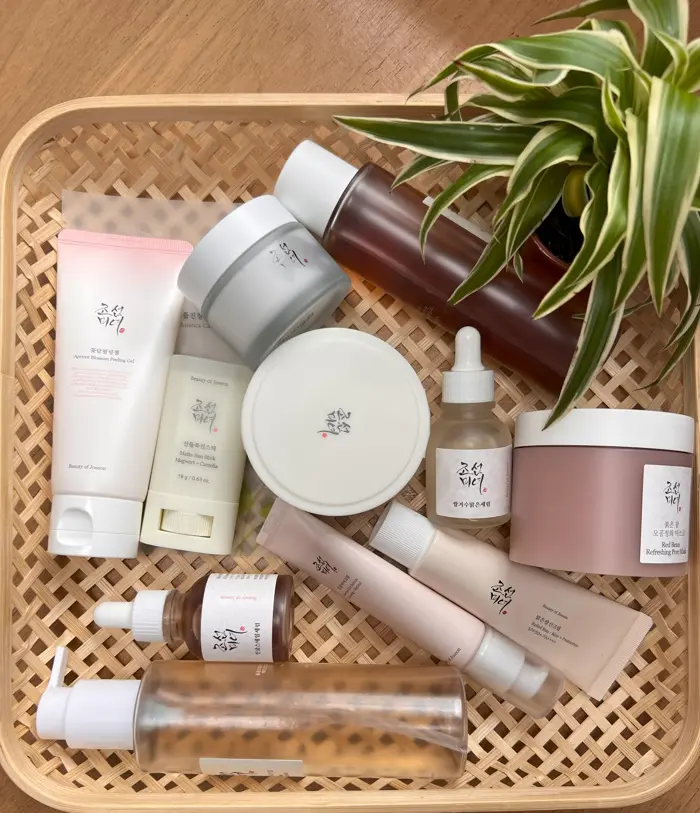
The Beauty of Joseon Brand
This Korean beauty brand creates skincare products using ingredients popular during the Joseon Dynasty. Traditional Hanbang (aka Korean herbal medicine) techniques and ingredients inspire product formulas. Thus, you will often find extracts of rice, ginseng, orchid, radish, etc., and traditional methods such as fermentation in their skincare collection.
Beauty of Joseon focuses on achieving bright, clear skin and improving skin health, thus highlighting one’s natural beauty. The ancient Korean Dynasty times have influenced its simplistic and traditional packaging.
The Beauty of Joseon brand has quickly gained enormous popularity due to its well-performing products, especially its first hit, the Beauty of Joseon Dynasty Cream. Beauty of Joseon Relief Sun is now its second hit.
This one hit hard.

What Is the Beauty of Joseon Relief Sun?
Beauty of Joseon Relief Sun is a chemical sunscreen with broadspectrum SPF 50+ PA++++ protection.
Beauty of Joseon Relief Sun Claims
Relief Sun is a lightweight and creamy type organic sunscreen that’s comfortable on skin. Even if you apply a large amount several times, it is not sticky and gives a moist finish like that of a light moisturizing cream.
Containing 30% rice extract and grain fermented extracts, it provides moisture and nourishment to the skin.
Beauty of Joseon
What Skin Type Is Beauty of Joseon Relief Sun For?
I recommend the Beauty of Joseon Relief Sun for every skin type. For oily skin, you should skip moisturizer as it is very moisturizing.
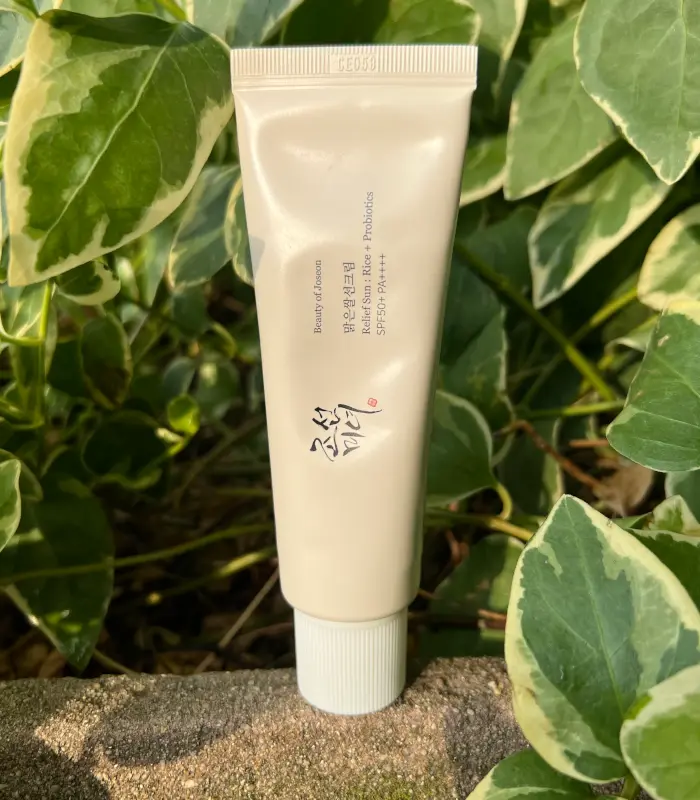
Beauty of Joseon Relief Sun Ingredients
Beauty of Joseon Relief Sun Ingredients List (last check [current_year])
Water, Oryza Sativa (Rice) Extract (30%), Dibutyl Adipate, Propanediol, Diethylamino Hydroxybenzoyl Hexyl Benzoate, Polymethylsilsesquioxane, Ethylhexyl Triazone, Niacinamide, Methylene Bis-benzotriazolyl Tetramethylbutylphenol, Coco-caprylate/Caprate, Caprylyl Methicone, Diethylhexyl Butamido Triazone, Glycerin, Butylene Glycol, Oryza Sativa (Rice) Germ Extract, Camellia Sinensis Leaf Extract, Lactobacillus/Pumpkin Ferment Extract, Bacillus/Soybean Ferment Extract, Saccharum Officinarum (Sugarcane) Extract, Macrocystis Pyrifera (Kelp) Extract, Cocos Nucifera (Coconut) Fruit Extract, Panax Ginseng Root Extract, Monascus/Rice Ferment, Pentylene Glycol, Behenyl Alcohol, Poly C10-30 Alkyl Acrylate, Polyglyceryl-3 Methylglucose Distearate, Decyl Glucoside, Tromethamine, Carbomer, Acrylates/C10-30 Alkyl Acrylate Crosspolymer, 1,2-Hexanediol, Sodium Stearoyl Glutamate, Polyacrylate Crosspolymer-6, Ethylhexylglycerin, Adenosine, Xanthan Gum, Tocopherol, Lactobacillus/Rice Ferment, Aspergillus Ferment, Saccharomyces/Rice Ferment Filtrate.
UV filters Herbs Humectant/Moisturizing Active Ferments
| Protection tests | Korean Lab | Spain Lab |
|---|---|---|
| SPF | 52.5±5.8 | 63.1±0.6 |
| PA | UVA PF 16.1±2.4 P++++ | UVA PF 19 P++++ |
Comedogenic ingredients: Tocopherol (2/5), Butylene Glycol (1/5), Carbomer (1/5).
Sunscreen filters
This product is formulated with new-generation sunscreen agents that are highly photostable. It offers strong protection over the entire spectrum of solar radiation.
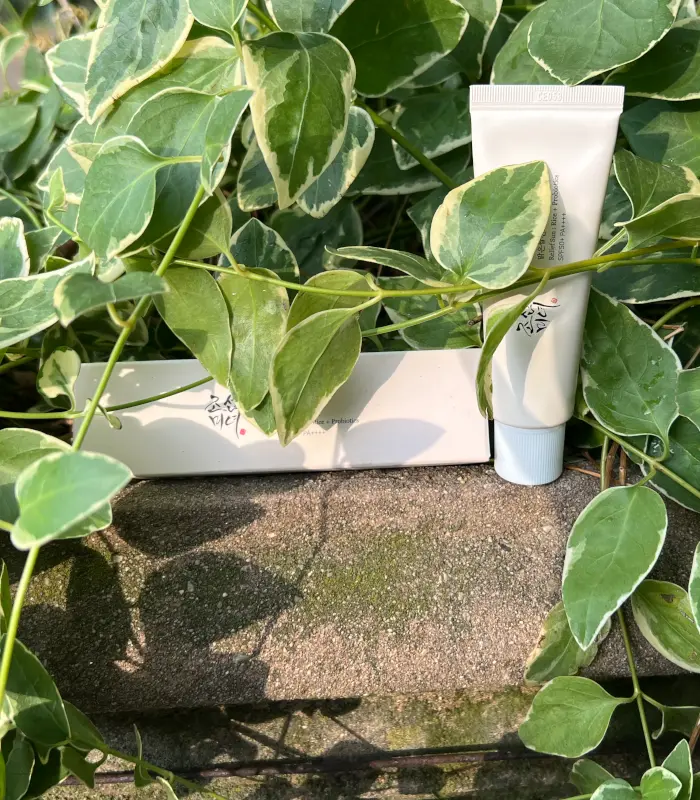
Uvinul A Plus
Uvinul A Plus (Diethylamino Hydroxybenxoyl Hexyl Benzoate) is a new-generation chemical sunscreen. It is designed for high UVA protection (whole range) and photostability. It is highly effective in protecting against free radicals. Uvinul A Plus is not FDA-approved.
Uvinul T 150
Uvinul T 150 (Ethylhexyl Triazone) is a new-generation photostable filter. It offers the highest photostable absorption of all accessible UV-B filters in the market.
Tinosorb M
Tinosorb M (Methylene Bis-Benzotriazolyl Tetramethylbutylphenol) is a broad-spectrum photostable filter. Protects against both types of UV rays in the 280-400 nm range.
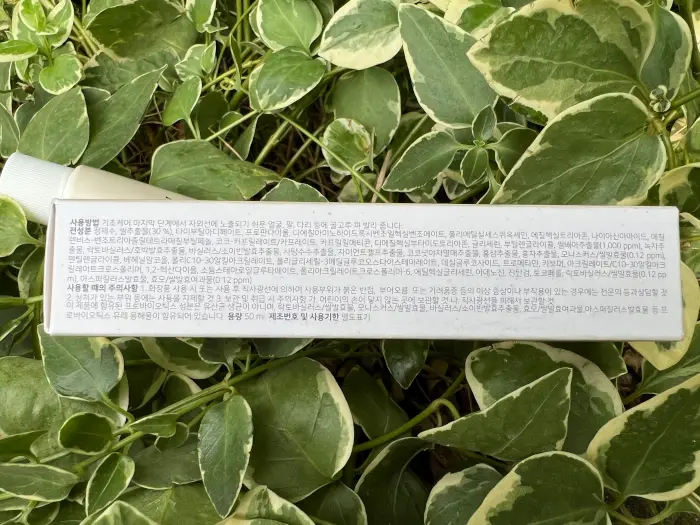
Uvasorb HEB
Uvasorb HEB (Diethylhexyl Butamido Triazone) is an effective UVB filter. Also known as Iscotrizinol, it offers up to 25 hours of complete UVA II and UVB and protection ranges.
Ingredients Explained
Rice (Oryza Sativa)
Beauty of Joseon Relief Sun contains 30% Rice Extract, Rice Germ Extract, and three types of Rice Ferments (Monascus, Lactobacillus, and Saccharomyces). The rice and probiotics are an exciting duo.
The hero ingredient for this serum is Rice bran water, which has long been used as a healthy food and skincare ingredient throughout Korean history. Rice bran is rich in amino acids and minerals moisturizes dry skin, brightens it, and also plays a role in soothing sensitive skin. In Korea, rice from ‘Icheon’ has been regarded as the best since ancient times and was even offered to the king of Joseon.
Rice is a staple food and a vital skincare ingredient in Korean history. In the Joseon Dynasty, rice bran water was used like today’s toners and was called Beauty Water. It was believed it made the skin beautiful.
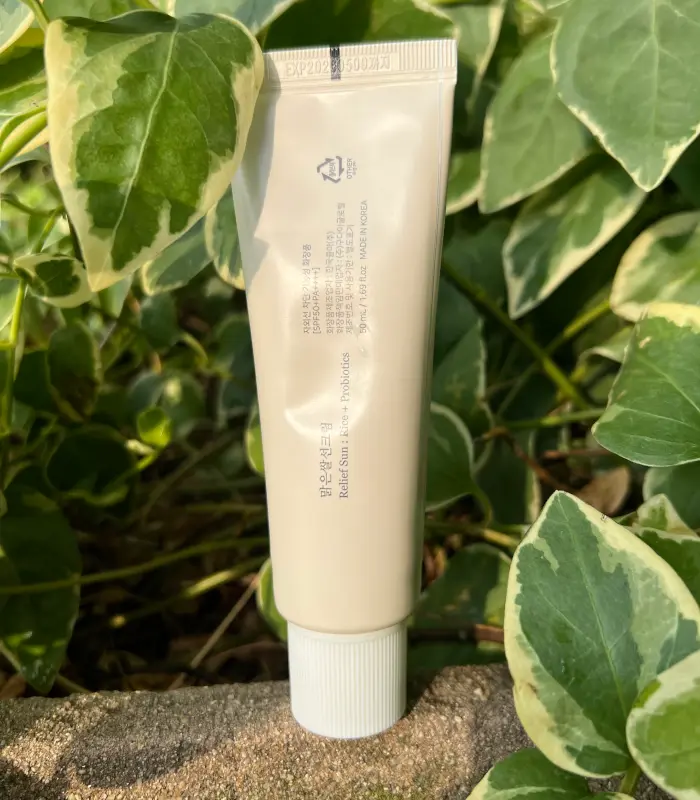
Rice contains many vitamins, amino acids, and minerals that can make the skin softer, firmer, and more radiant.
Fermented rice extract can bring even more benefits to the skin. It evens out texture, gently cleanses the skin, reduces age spots, helps fight signs of aging by reducing free radicals, makes the skin more radiant and firm, and helps to soothe and restore it from damage. Due to its small molecular size and weight, skin cells can easily absorb the filtrate.
Niacinamide
Complete Guide on Niacinamide by Adela Wong for Garden of Muses
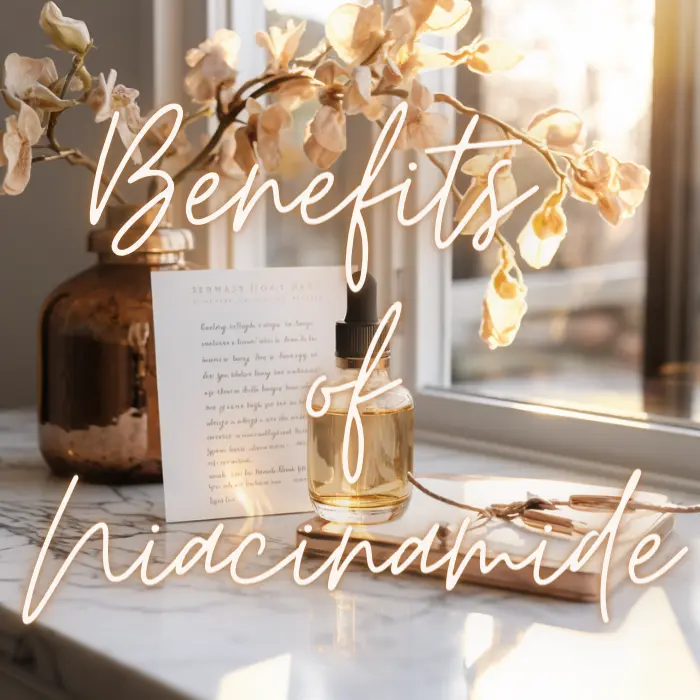
Niacinamide has been making a splash in the Western market over the last few years but has been a superstar in Asian skincare for decades. This beauty powerhouse is the topical form of vitamin B3.
Several well-documented studies show that when used topically, niacinamide can:
- Improve barrier function by increasing ceramides and lipids, increase stratum corneum thickness, and decrease transepidermal water loss;
- Renew the skin and smooth out wrinkles;
- Boost hydration;
- Control sebum production;
- Reduce acne;
- Calm redness and even out red blotchiness;
- Improve skin texture;
- Lighten age spots;
- Brighten sallowness of the skin;
- Treat rosacea, melasma and psoriasis.
Long story short, niacinamide does everything, and the good news is that it is well-tolerated by most skin types. To learn more, please read our Complete Guide on Niacinamide and How to Reduce Hyperpigmentation with Niacinamide.
Glycerin
Guide on Best Humectants in Skincare
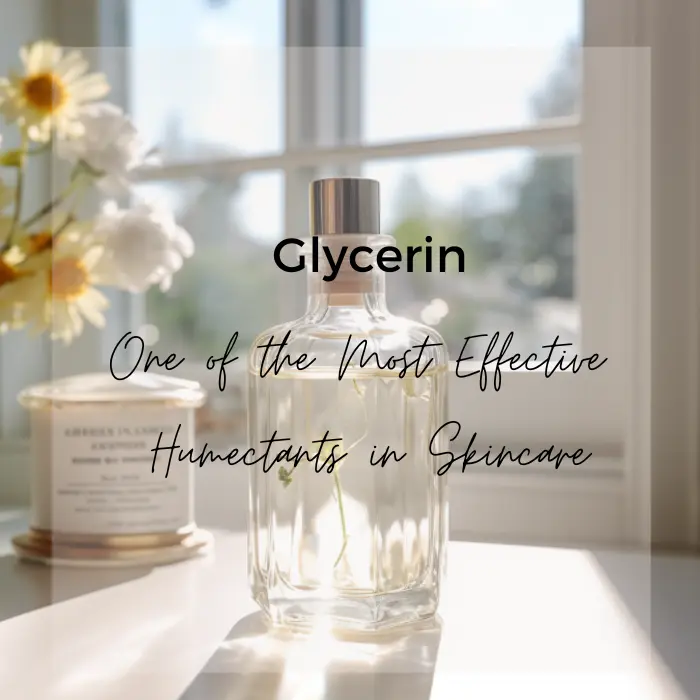
Glycerin is a very effective humectant, used in many moisturizers to increase skin hydration. It occurs naturally in your skin as part of its home-grown moisturizing system, the natural moisturizing factor (NMF).
Like other humectants, it works by sitting in the top layers of your skin and attracting water from the air and the deeper layers, leaving your skin surface plump and hydrated, even when the weather is arid. This ingredient softens the skin so that other hydrating ingredients can more easily penetrate it.
Glycerin also keeps the skin’s lipids flexible, strengthening your skin barrier.
Butylene Glycol
Butylene glycol is probably one of the most widely used skincare ingredients. It’s commonly used in many skincare and cosmetic products, such as cleansers, serums, moisturizers, sunscreen, sheet masks, foundation and mascara.
I bet if you checked the ingredients list of your skincare products, most of them would contain butylene glycol. This is because it is very effective at increasing skin penetration by other ingredients, as many active ingredients have a molecular weight that is too large for effective skin penetration.
Butylene glycol is also often used as a skincare ingredient to give products a thinner consistency, making them feel less greasy and easier to apply.
Lastly, butylene glycol also has humectant properties due to its alcohol groups. It can draw moisture (water molecules) from the surrounding air and hydrate your skin like hyaluronic acid.
Ferments
Probiotics are one of the beneficial results of fermentation. Probiotics are a complete delight and excellent nutrition for our skin microbiome.
Dr. Shereene Idriss, MD, a New York City-based board-certified dermatologist, founder of Idriss Dermatology, and creator of the PillowtalkDerm skincare brand, says fermented ingredients are good for your skin because of three main reasons. Fermentation:
- “increases the potency of the active ingredient by utilizing the yeast, and through the fermentation process, that yeast secretes enzymes which make the active ingredient much more potent.”
- “enhances penetration of the active ingredient because, through fermentation, the ingredient gets broken down into smaller sizes. The smaller the size of the active ingredient, the better it can penetrate deep into your skin.”
- “increases the preservation of the active ingredient, because through fermentation a metabolite is created that prevents the growth of unwanted bacteria, preserving the life of your product over time and making it safer for you to use.”
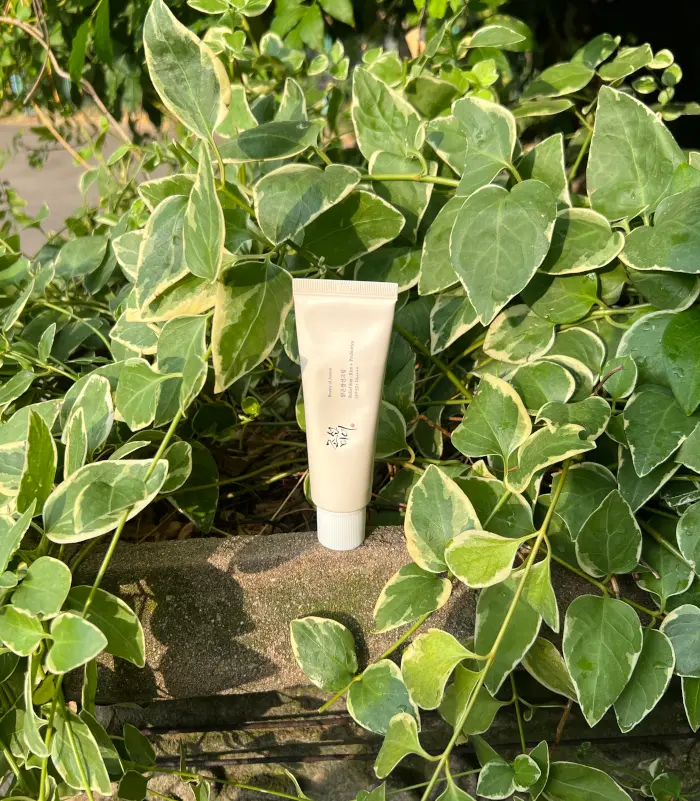
Alcohol
Alcohol can potentially assist product absorption, but it is an irritant. It can cause skin dryness and damage the skin barrier in high enough doses.
Fortunately, it is not high on the list and does not smell like alcohol.
Green Tea Extract, Ginseng Extract, and Tocopherol are also responsible for the antioxidant activity in this sunscreen.
Beauty of Joseon Relief Sun Does Not Contain
The sunscreen is fragrance-free and essential oil-free. It does not contain hyaluronic acid (for those sensitive to it). Moreover, its ingredients are EWG green-level certified.
The Beauty of Joseon Relief Sun is vegan and cruelty-free.
Comedogenic ingredients: Butylene Glycol (1/5), Carbomer (1/5), Tocopherol (2/5).
Fungal acne-triggering ingredients: Polyglyceryl-3 Methylglucose Distearate.
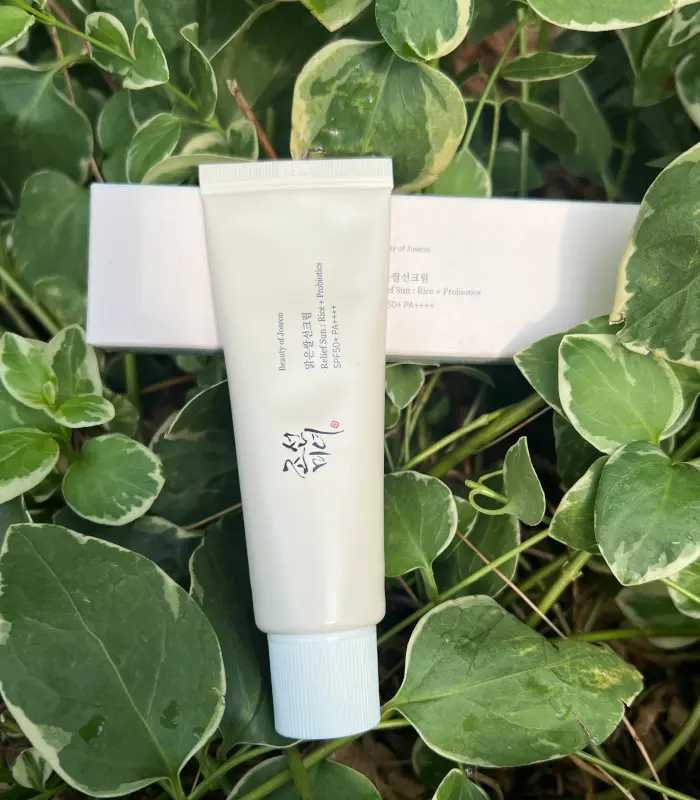
Packaging
I am not a packaging fanatic; I want it to be functional at the end of the day, and that is not an obstacle here.
Like most other facial sunscreens, the Beauty of Joseon sunscreen comes in a simple squeeze tube. The product does not remain on the walls.
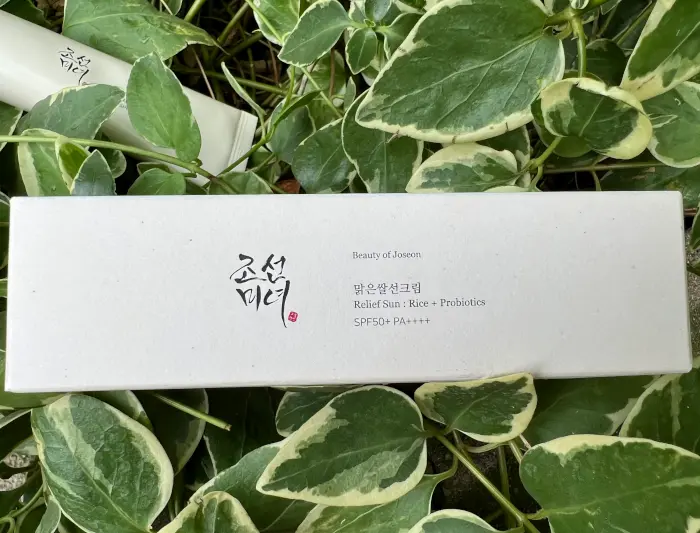
Scent
The sunscreen has no scent, which is a big plus for some.
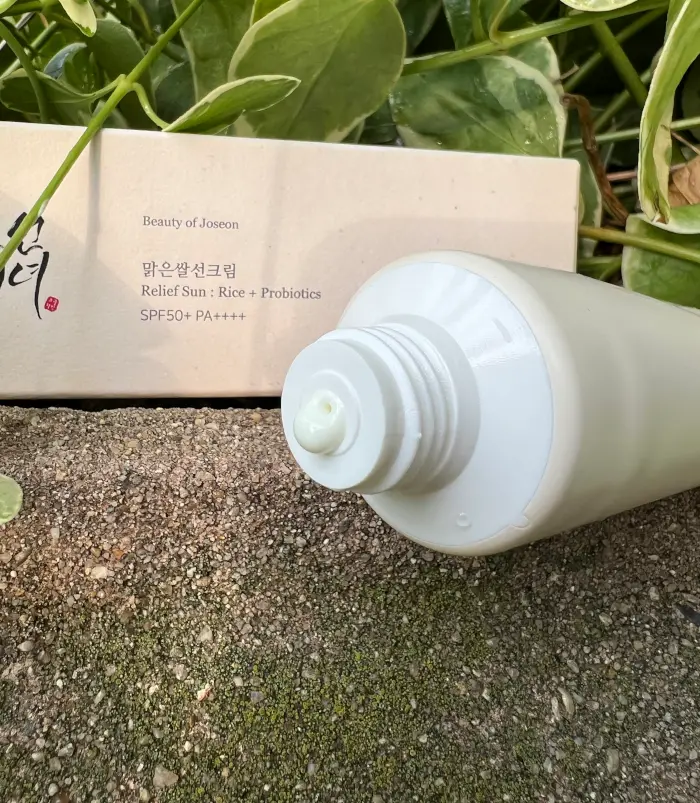
Texture & Finish
The cream’s consistency is very light, almost like a serum. It spreads easily and is absorbed quickly, leaving virtually no stickiness, only a slight glow.
The finish is semi-dewy. It is not quite the glassy skin sheen of the Purito Daily Go-To Sunscreen, but it is not matte. It’s just dewy, in a good way.
It looks fantastic, and it doesn’t make me want to apply powder even though I’m more of a “matte” girl.
My Experience with the Beauty of Joseon Relief Sun: Rice + Probiotics
First impression
I have been using this sunscreen for several months, but my first impression was, WOW, it’s feather-like.
My skin
I have a normal to dry skin type, and I live in a typically continental with cold winters and hot summers.
My skin is resilient – I haven’t reacted to hundreds of products throughout my lifetime. Still, I use tretinoin, so first and foremost, I am married to sunscreen.
Effectiveness & Waterproofness
I have never worn this sunscreen in the water, but I had worn it while jogging and hiking.
This Beauty of Joseon sunscreen wore much better than many waterproof sunscreens I have used, including the Missha All Around Safe Block Waterproof.
I have never had a sunburn while using this product. Still, the manufacturer does not state the waterproofness of this sunscreen.
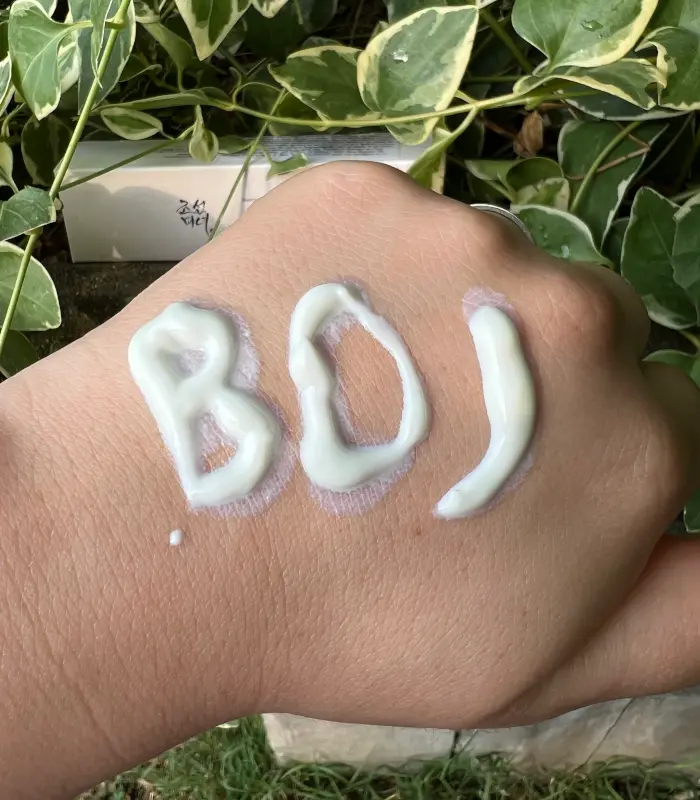
Texture
Beauty of Joseon is one of those skincare brands that get skincare textures so incredibly right, and their Relief Sun: Rice + Probiotics is no exception.
Out of all the sunscreens I tried, the Beauty of Joseon sunscreen is high on my list of favorites regarding texture and how it wears with makeup throughout the day.
Finish
The Beauty of Joseon sunscreen feels very light, like a watery serum, and as it gently glides into my skin, it starts sinking in and feels utterly weightless without any stickiness. Still, it moisturizes my skin very well.
It feels soft on my skin, and I love that it dries down to a semi-dewy, silky, moisturized finish. It leaves a glow without greasiness.
It gives me the feeling you get when you wake up with an overnight mask or sleep well the night before.
Beauty of Joseon Relief Sun is more than just sunscreen. It’s skin care.
After 15 minutes, it settles nicely and looks like I’m not wearing anything.
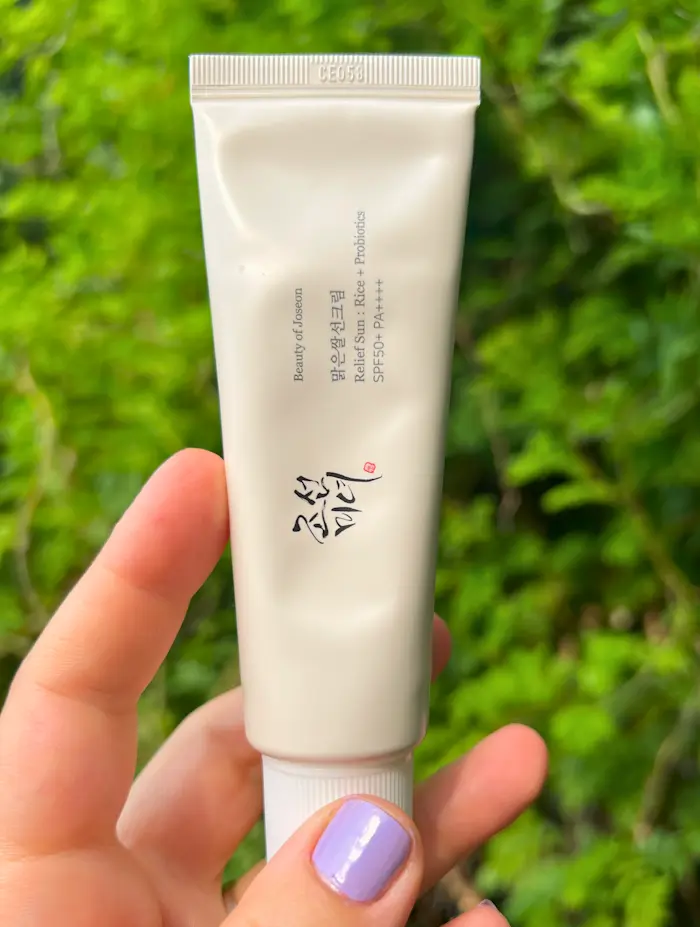
Eyes
Unlike many other sunscreens, it does not bother my eyes. It doesn’t sting or burn my eyelids even if I sweat or rub my eyes.
White-cast
The cream is white and does not leave a white cast on application, but I am fair-skinned.
My colleague, Emma Wilson, who has a deeper complexion, says that when you first apply it, there is an initial white cast, but it fades quickly. She experienced zero lingering white cast.
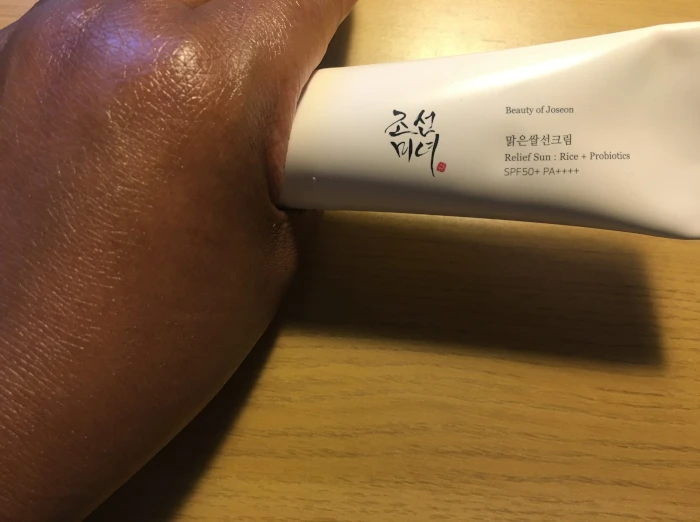
Makeup
What makes Beauty of Joseon Relief Sun sunscreen so very different from the rest is that this sunscreen sits beautifully underneath makeup and helps my makeup last on some of the most sweltering hot days.
The Beauty of Joseon sunscreen is more like a sunscreen and primer in one. It helps smooth, even out, and blur minor imperfections in the skin to create a fantastic base for foundation.
My foundation applies perfectly on top of the BOJ sunscreen; it doesn’t pill or flake off. Instead, it glides over the skin like silk to create that perfect base.
My makeup also lasts a little longer (read: it doesn’t melt off as quickly) when I wear this underneath makeup.
Sure, I will look like a hot, sweaty mess by the end of that day. However, my foundation stays intact longer when I use this.
How I Use the Beauty of Joseon Relief Sun:
- In the AM, I wash my face with water;
- I apply my vitamin C serum;
- I follow with essence and serum;
- Even if my skin is on the drier side, I skip moisturizer when I use this sunscreen;
- I apply a generous amount and spread it evenly on areas easily exposed to UV rays.
- Reapply throughout the day as needed / every two hours, especially during prolonged sun exposure.
This sunscreen is famous in Reddit’s r/AsianBeauty sub, and I finally understand why.
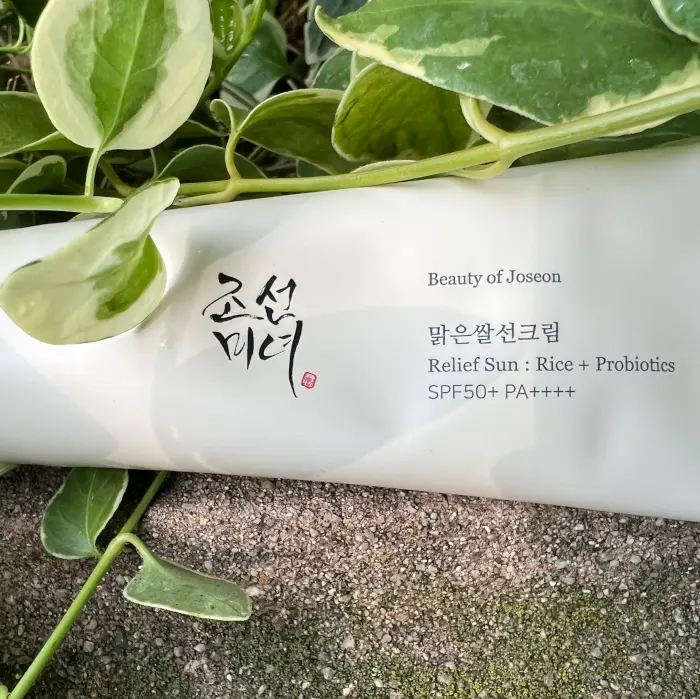
Pros
- third-party lab-tested
- new-generation photostable filters
- moisturizing
- lightweight
- no white cast
- suitable for all skin types
- wears well underneath makeup
- doesn’t sting the eyes
- affordable
Cons
- not readily available in the US
- small size
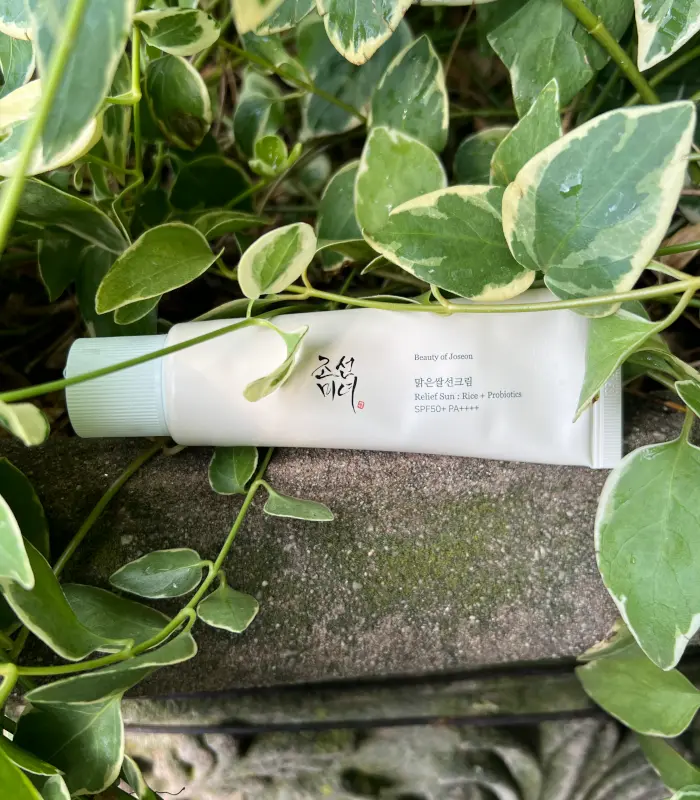
Verdict
I am incredibly picky about sunscreen. I’ve finished at least 25 Sun products. So far, only five are repurchases, and two are holy grails.
In my definition, a good sunscreen must be lightweight, fast-absorbing, have proper SPF and PA protection, be refreshing and hydrating, not have a funny scent, and of course, I must afford it.
The Beauty of Joseon SPF Relief Sun Rice + Probiotics is a sunscreen that passes all my requirements with flying colors!
The Beauty of Joseon sunscreen is an absolute dream for its effectiveness, price, and overall how it sits and feels on my skin.
There is a reason why this is one of my holy grails and why I have been using this religiously over the past few months.
Overall, Beauty of Joseon Relief Sun is an excellent sunscreen that deserves praise.
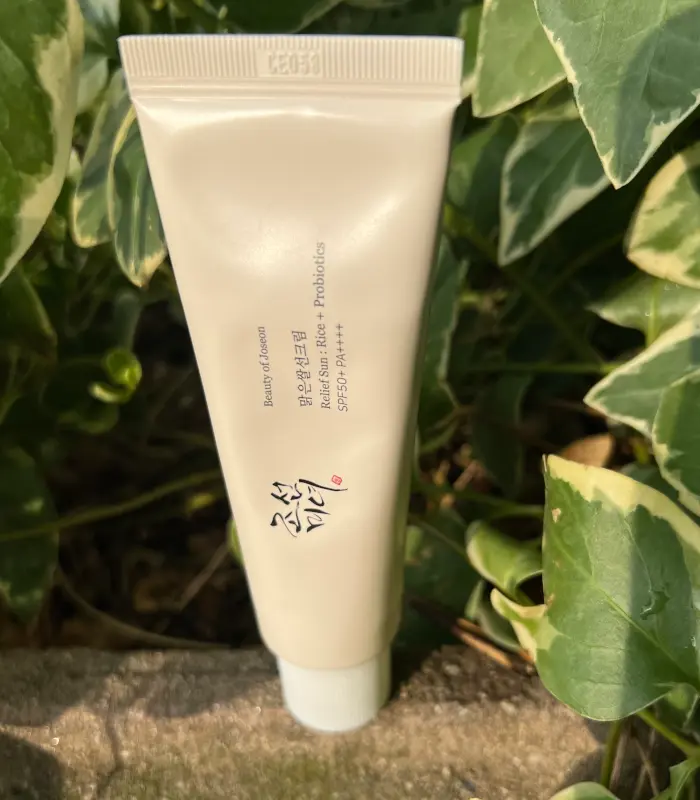
Will I Repurchase Beauty of Joseon Relief Sun?
I enjoy this product and am almost certainly repurchasing it.
Rating 5/5
Beauty of Joseon Relief Sun vs. Tocobo Bio Watery Sun Cream
The Beauty of Joseon Relief Sun is very similar in texture to the Tocobo sunscreen.
I can say that the Beauty of Joseon is thicker than Tocobo and does not absorb as quickly. However, these two sunscreens are the lightest Korean-made sunscreens that I have come across at the moment.
The Beauty of Joseon has no scent. None at all. In contrast, Tocobo’s shortcoming is its floral-fruity smell. So, scent-wise, Beauty of Joseon confidently wins over the Tocobo.
Beauty of Joseon Relief Sun is more dewy and more appropriate for dry skin. At the same time, the Tocobo Bio Watery Sun Cream has a velvety matte finish, and I feel it is more suitable for oilier skin types.
Beauty of Joseon Relief Sun vs. Round Lab Birch Juice Moisturizing Sunscreen
Surprisingly, the Beauty of Joseon brand is not well known in Korea. It is marketed towards the international market.
Instead, Koreans are obsessed with the Round Lab Birch Juice Moisturizing Sunscreen. It is very similar to the BOJ sunscreen. It also has no white cast and is moisturizing
Beauty of Joseon Relief Sun vs. Beauty of Joseon Ginseng Moist Sun Serum
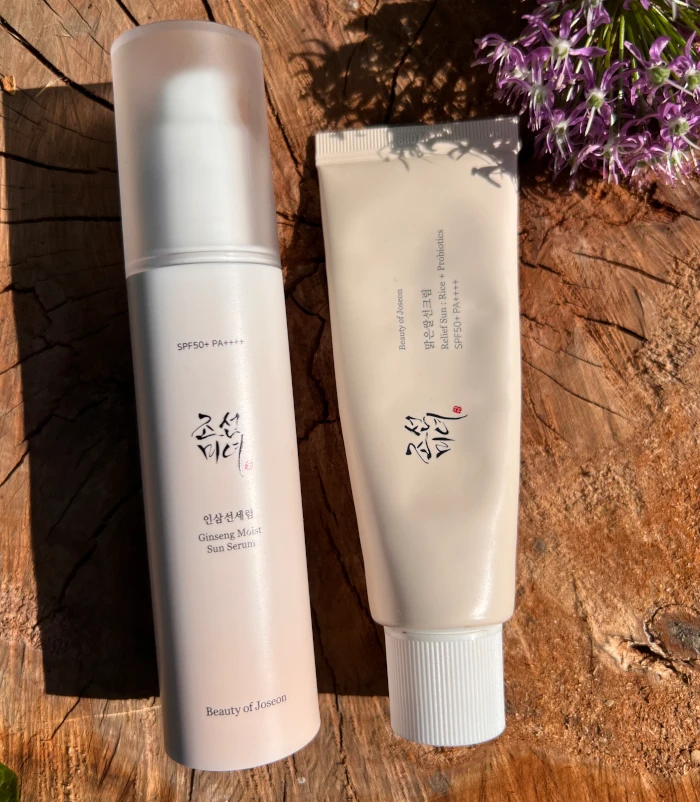
| BOJ Relief Sun | BOJ Ginseng Moist Sun Serum | |
|---|---|---|
| Protection | SPF50 PA++++ | SPF50 PA++++ |
| UV Filters | Uvinul A Plus Uvinul T 150 Tinosorb M Uvasorb HEB (chemical) | Amiloxate Uvinul A Plus Tinosorb S Parsol SLX (Chemical) |
| Key Ingredients | Rice Extract 30% 2% niacinamide | Ginseng Extract 30% 2% niacinamide |
| Packaging | tube | pump |
| Scent | none | ginseng |
| Texture | moisturizer | serum |
| Finish | moisturized and dewy | more natural |
| Other | less hydrating, less plumping | |
| Good for | normal/dry | combo/oily |
| Price per ounce | $10 | $12 |
The Beauty of Joseon Ginseng Moist Sun Serum is more suitable for combo/oilier types. The finish is quite natural, more matte than the Sun Relief sunscreen’s. I think it’s less hydrating and less plumping compared to the Sun Relief sunscreen.
Also, the Ginseng Moist Sun Serum contains essential oils and alcohol so watch out if you are sensitive. Unlike the BOJ Relief Sun, the Ginseng Moist Serum has a strong whiff of ginseng upon application but none of the smell from the oils. I don’t usually avoid fragrance, but I wouldn’t say I like this scent.
For those sensitive to niacinamide, both sunscreens contain 2% niacinamide.
Shop for Beauty of Joseon Relief Sun
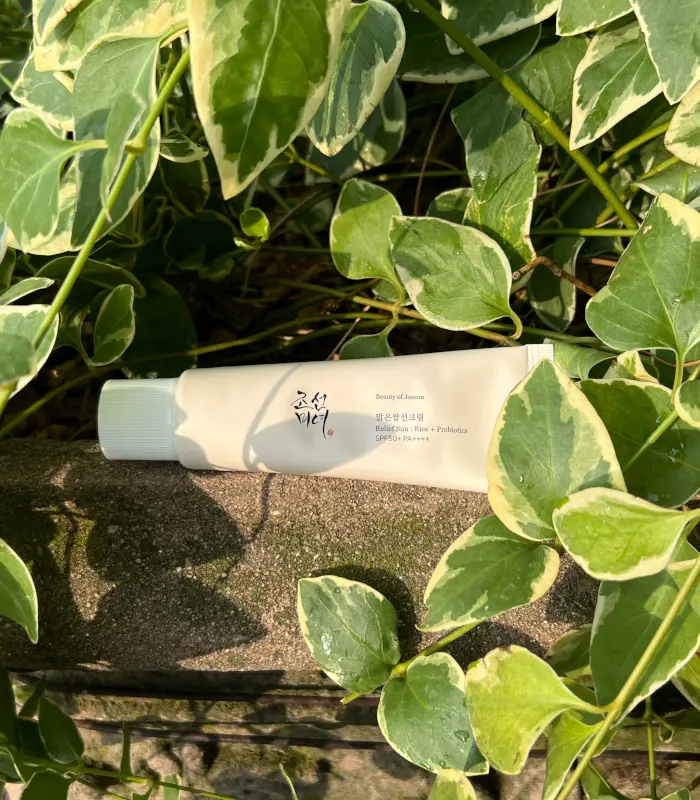
Lastly, I was not paid for this review or received it as a gift.
As always, you do you; be kind to your skin and yourself! Remember that every person’s skin and skin type is different, so what might work for me might not work for you, and vice versa. So, before adding a new product to your skincare routine, it pays to do a little research first.
Before adding the Beauty of Joseon Sunscreen to your skincare regimen, ensure you are not allergic to it or its ingredients. You should also consult your doctor if you are pregnant or breastfeeding or have any medical conditions or medications that may interact with the Beauty of Joseon Sunscreen. Always do a patch test before applying the Beauty of Joseon Sunscreen on your skin to avoid adverse reactions.
I am not a dermatologist or licensed aesthetician, but I have sufficient experience and knowledge I gained by testing multiple products and self-exploration. Unsure? Best to consult your dermatologist.
Happy shopping, and don’t forget the sunscreen! Here’s to great skin in [current_year]!
Read Next
Beauty of Joseon Ginseng Moist Sun Serum Is Good, Not Marry-Me-Good
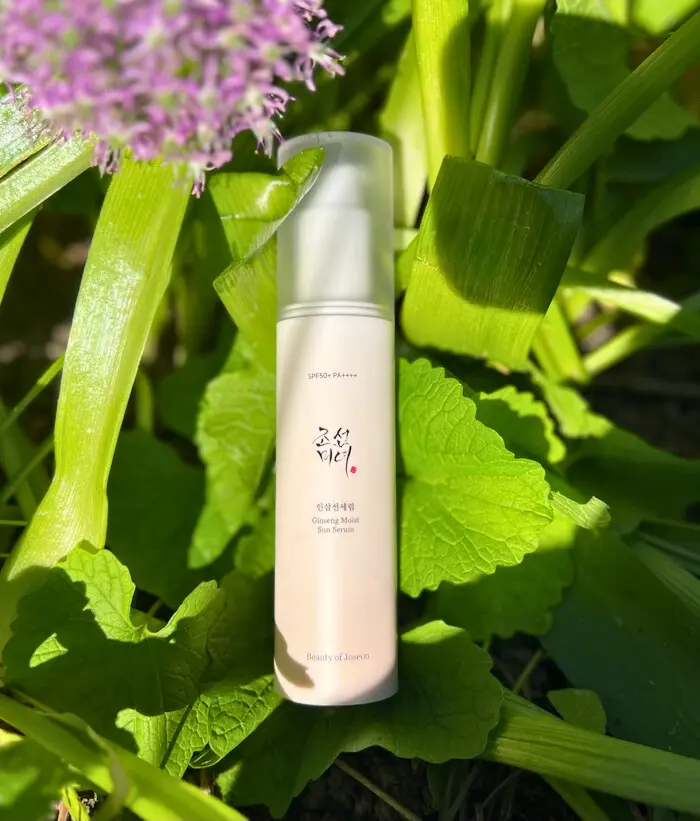
Beauty of Joseon Matte Sun Stick Mugwort Camelia’s Finish Is a Silky Dream

Show Me Proof
- Tanno, O., Y. Ota, N. Kitamura, T. Katsube, and S. Inoue. “Nicotinamide increases biosynthesis of ceramides as well as other stratum corneum lipids to improve the epidermal permeability barrier.” British Journal of Dermatology 143, no. 3 (2000): 524-531.
- Mohammed, D., J. M. Crowther, P. J. Matts, J. Hadgraft, and M. E. Lane. “Influence of niacinamide containing formulations on the molecular and biophysical properties of the stratum corneum.” International journal of pharmaceutics 441, no. 1-2 (2013): 192-201.
- Snaidr, Victoria A., Diona L. Damian, and Gary M. Halliday. “Nicotinamide for photoprotection and skin cancer chemoprevention: A review of efficacy and safety.” Experimental dermatology 28 (2019): 15-22.
- Gehring, W. “Nicotinic acid/niacinamide and the skin.” Journal of Cosmetic Dermatology 3, no. 2 (2004): 88-93.
- Soma, Yoshinao, Masato Kashima, Akiko Imaizumi, Hideto Takahama, Tamihiro Kawakami, and Masako Mizoguchi. “Moisturizing effects of topical nicotinamide on atopic dry skin.” International journal of dermatology 44, no. 3 (2005): 197-202.
- Draelos, Zoe Diana, Akira Matsubara, and Kenneth Smiles. “The effect of 2% niacinamide on facial sebum production.” Journal of Cosmetic and Laser Therapy 8, no. 2 (2006): 96-101.
- Shahmoradi, Zabiolah, Farib Iraji, Amir Hossein Siadat, and Azamosadat Ghorbaini. “Comparison of topical 5% nicotinamid gel versus 2% clindamycin gel in the treatment of the mild-moderate acne vulgaris: A double-blinded randomized clinical trial.” Journal of Research in Medical Sciences: The Official Journal of Isfahan University of Medical Sciences 18, no. 2 (2013): 115.
- Ungerstedt, J. S., M. Blombäck, and T. Söderström. “Nicotinamide is a potent inhibitor of proinflammatory cytokines.” Clinical & Experimental Immunology 131, no. 1 (2003): 48-52.
- Bissett, D. L., K. Miyamoto, P. Sun, J. Li, and C. A. Berge. “Topical niacinamide reduces yellowing, wrinkling, red blotchiness, and hyperpigmented spots in aging facial skin 1.” International journal of cosmetic science 26, no. 5 (2004): 231-238.
- Darlenski, Razvigor, Jana Kazandjieva, Nikolai Tsankov, and Joachim W. Fluhr. “Acute irritant threshold correlates with barrier function, skin hydration and contact hypersensitivity in atopic dermatitis and rosacea.” Experimental dermatology 22, no. 11 (2013): 752-753.
- Navarrete-Solís, Josefina, Juan Pablo Castanedo-Cázares, Bertha Torres-Álvarez, Cuauhtemoc Oros-Ovalle, Cornelia Fuentes-Ahumada, Francisco Javier González, Juan David Martínez-Ramírez, and Benjamin Moncada. “A double-blind, randomized clinical trial of niacinamide 4% versus hydroquinone 4% in the treatment of melasma.” Dermatology research and practice 2011 (2011).
- Namazi, Mohammad Reza. “Nicotinamide: a potential addition to the anti‐psoriatic weaponry.” The FASEB journal 17, no. 11 (2003): 1377-1379.
- Al-Ghazzewi, F. H., and R. F. Tester. “Impact of prebiotics and probiotics on skin health.” Beneficial microbes 5, no. 2 (2014): 99-107.
- Maguire, Mia, and Greg Maguire. “The role of microbiota, and probiotics and prebiotics in skin health.” Archives of Dermatological Research 309, no. 6 (2017): 411-421.
- Chularojanamontri L, Tuchinda P, Kulthanan K, Pongparit K. Moisturizers for Acne: What are their Constituents? J Clin Aesthet Dermatol. 2014 May;7(5):36-44. PMID: 24847408; PMCID: PMC4025519.
- Björklund S, Engblom J, Thuresson K, Sparr E. Glycerol and urea can be used to increase skin permeability in reduced hydration conditions. Eur J Pharm Sci. 2013 Dec 18;50(5):638-45. doi: 10.1016/j.ejps.2013.04.022. Epub 2013 May 3. PMID: 23643739.
- Fluhr, J. W., R. Darlenski, and C. J. B. J. Surber. “Glycerol and the skin: holistic approach to its origin and functions.” British Journal of Dermatology 159, no. 1 (2008): 23-34.
- S Kwak, E Brief, D Langlais, N Kitson, M Lafleur, J Thewalt, Ethanol perturbs lipid organization in models of stratum corneum membranes: An investigation combining differential scanning calorimetry, infrared and 2H NMR spectroscopy, Biochimica et Biophysica Acta (BBA) – Biomembranes, Volume 1818, Issue 5, 2012, https://doi.org/10.1016/j.bbamem.2012.02.013
